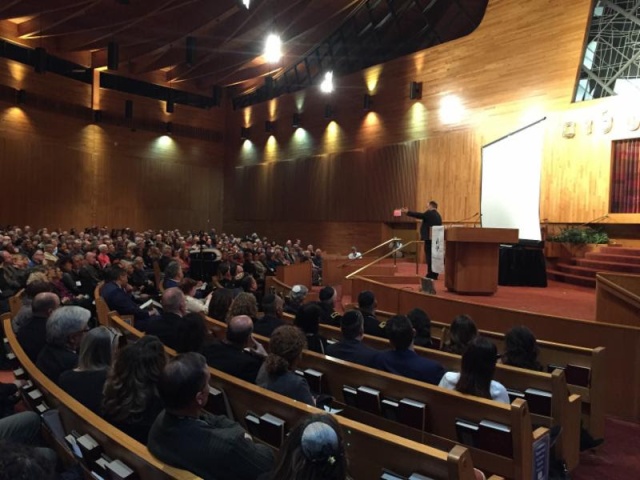On Holocaust Remembrance Day Trump’s White House issued a statement condemning Nazi terror and resolving to prevent generalized atrocities in the future. The statement, however, did not mention Jews or antisemitism. This omission raised eyebrows. Upon questioning, a spokeswoman for Trump’s administration cited inclusivity of and sensitivity to all of the groups that perished under Nazi brutality as the cause for ambiguity in the aforementioned statement. The spokeswoman directed attention to an article that discussed the killing of six million Jews as well as the killing of “priests, gypsies, people with mental or physical disabilities, communists, trade unionists, Jehovah’s Witnesses, anarchists, Poles and other Slavic peoples, and resistance fighters” under the Nazi regime.
While these groups were Nazi targets, no group was targeted as indiscriminately as the Jews. Antisemitism produced a unique brand of blind hatred. At the Holocaust Remembrance Day event held on January 26th in the Twin Cities, Patrick Desbois – a French Catholic priest known for his work identifying sites of genocidal violence and author of The Holocaust by Bullets – explained that Jewishness was a source of unequivocal condemnation. “Never was there a Jewish child too young or a Jewish woman too old for the Nazis to destroy,” he said.

It is important to make visible the identity of people targeted by violent groups. By erasing identity from the consciousness surrounding atrocities and genocides, the ability to identify, remember, and understand the motivations of and circumstances under which grave violations of human rights occur is forfeited. While the motivations of perpetrators are factually void, they incite very real horrors and must consequently be understood. When we fail to acknowledge the nature of atrocities, we damage our capacity to vigilantly watch for and avoid the mounting circumstances that give rise to such abominations as the Holocaust.
The trend towards perceiving the Holocaust as an atrocity featuring generalized victimization – often in connection with the accusation that Jews have for too long claimed a “special pleading” over the Holocaust– is common to far-right nationalist movements. While the Trump administration defended their statement as sensitive to all people who perished under Nazi terror, President Trump later contradicted this pattern of non-distinctive recognition. In a tweet on the 29th of January, President Trump said “Christians in the Middle-East have been executed in large numbers. We cannot allow this horror to continue!” This is notable as it takes specific account of the victimization of a group that, while not targeted to the degree Jews were during the Holocaust, is in alignment with Trump’s personal identity and the identity of his political base. Moreover, in highlighting Christian suffering, Trump has completely over-looked other minority groups in the Middle East that are affected by mass violence, like the Kurds, the Yezidis, and Shia’as. Trump’s exuberance in recognizing the identity of targeted groups he aligns with contrasts eerily with his refusal to include Jews and antisemitism in his Holocaust Remembrance Day statement.
The White House’s statement on the Holocaust is an indication that power and politics determine how atrocities will be viewed by Trump’s administration. Whether or not atrocities will be deemed worthy of proper recognition is seemingly contingent upon the identity of the victims being in proximal relation to Trump and his political base.
Camille Grey is pursuing a dual degree in Sociology and a Bachelor of Individualized studies in the malleability of human nature at the University of Minnesota.

Comments